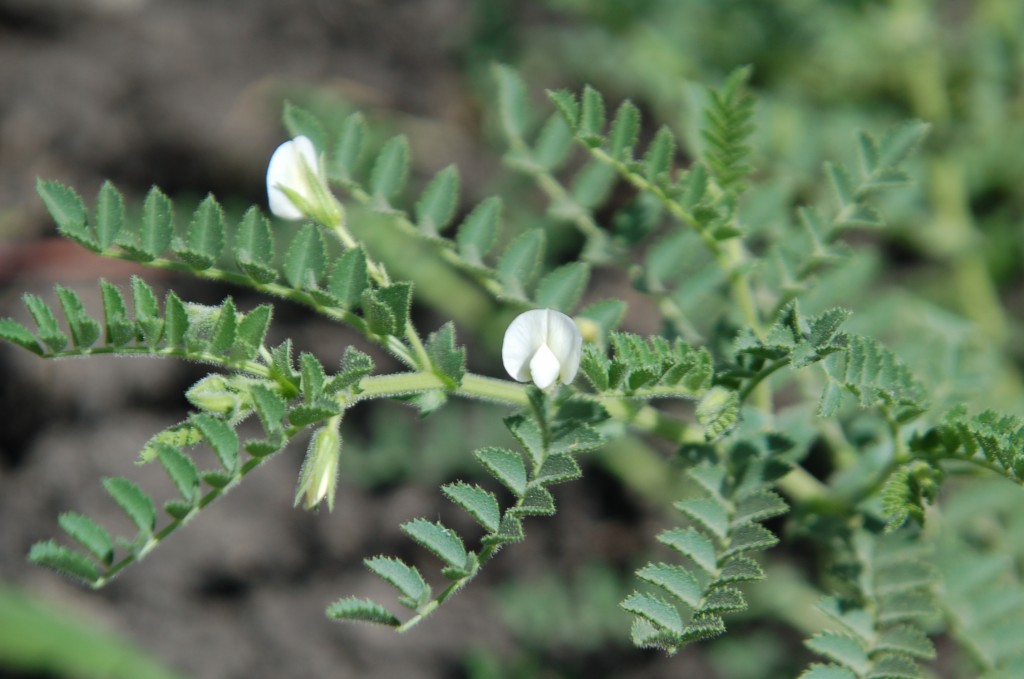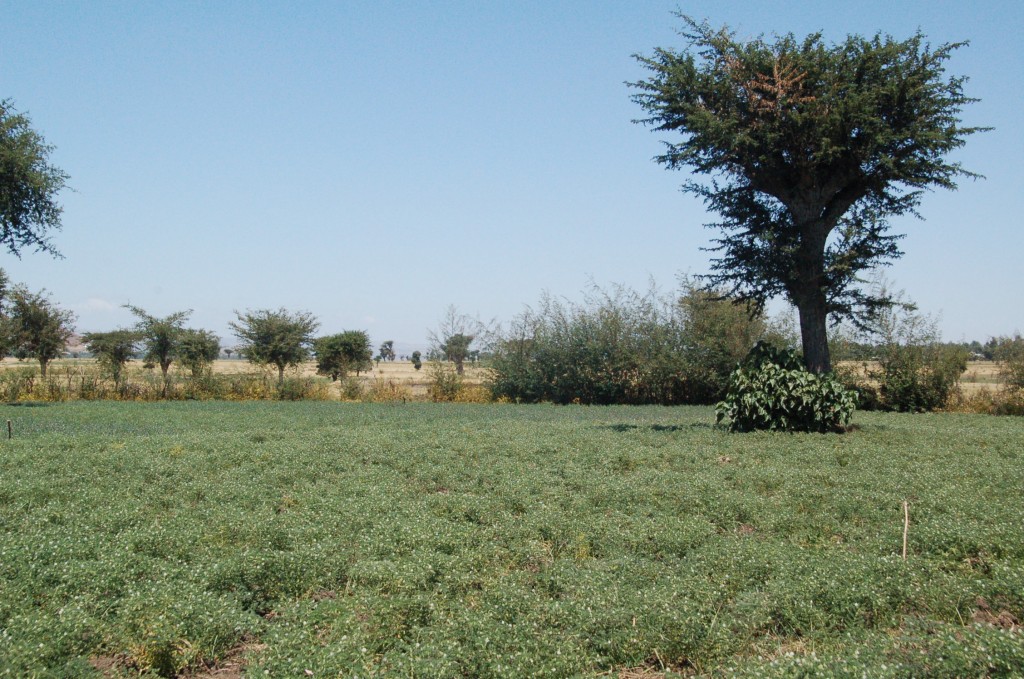
Flowering chickpea plant.
Soils representing diverse soil types and agro-ecological zones were sampled in Ethiopia and analyzed in Finland. Nodule bacteria were isolated from legume plants faba bean (Vicia faba), lentil (Lens culinaris), grass pea (Lathyrus sativus) and chickpea (Cicer arietinum), growing in the greenhouse on ten soil samples representing acidic, neutral and sodic soils. The nodulation capacity of the isolates will be authenticated in the greenhouse by inoculating them on their own host legumes. The nitrogen fixation efficiency and cross-inoculation ability (host-range test) of the bacterial isolates will further be tested in the greenhouse with faba bean, lentil, field pea and grass pea. These experiments will aid in the selection of the best performing N2-fixing bacteria that can in the future be applied in field conditions as biofertilizer to increase productivity of the legumes.
Molecular methods and bioinformatics tools will be used to determine genetic diversity (AFLP), and phylogenetic and taxonomic relationships (MLSA). Bionumerics version 6 will be used to study the genetic AFLP fingerprints diversity of the rhizobial isolates.

Chickpea field.
The relationship between soil factors, geographic coordinates and climatic data, such as rainfall and temperature range data of the sampling sites, and the genetic diversity of the isolates will be analyzed by multivariate statistical methods to unravel biogeographic patterns.
Two PhD students from Addis Ababa University, Ethiopia, are working and being trained in this subproject.
